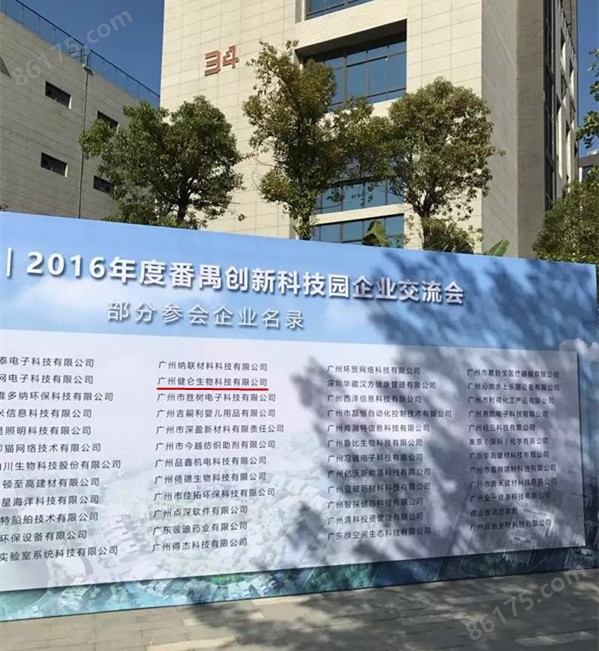其他品牌 品牌
代理商厂商性质
广州市所在地
猫疱疹病毒IgG免疫荧光玻片
Feline Herpesvirus IgG IFA Substrate slide
广州健仑生物科技有限公司
主要用途:用于检测猫血清中猫疱疹病毒IgG抗体
产品规格:12 孔/张,10 张/盒
主要产品包括:包柔氏螺旋体菌、布鲁氏菌、贝纳特氏立克次体、土伦杆菌、钩端螺旋体、新型立克次体、恙虫病、立克次体、果氏巴贝西虫、马焦虫、牛焦虫、利什曼虫、新包虫、弓形虫、猫流感病毒、猫冠状病毒、猫疱疹病毒、犬瘟病毒、犬细小病毒等病原微生物的 IFA、MIF、ELISA试剂。
猫疱疹病毒IgG免疫荧光玻片
我司还提供其它进口或国产试剂盒:登革热、疟疾、西尼罗河、立克次体、无形体、蜱虫、恙虫、利什曼原虫、RK39、汉坦病毒、深林脑炎、流感、A链球菌、合胞病毒、腮病毒、乙脑、寨卡、黄热病、基孔肯雅热、克锥虫病、违禁品滥用、肺炎球菌、军团菌、化妆品检测、食品安全检测等试剂盒以及日本生研细菌分型诊断血清、德国SiFin诊断血清、丹麦SSI诊断血清等产品。
欢迎咨询
欢迎咨询2042552662

| JL-FL54 | 牛双芽巴贝西虫免疫荧光玻片 | babesia bigemina IFA Substrate slide |
| JL-FL55 | 牛双芽巴贝西虫免疫荧光试剂盒 | babesia bigemina IFA Kit |
| JL-FL56 | 牛巴贝西虫免疫荧光玻片 | babesia bovis IFA Substrate slide |
| JL-FL57 | 牛巴贝西虫免疫荧光试剂盒 | babesia bovis IFA Kit |
| JL-FL58 | 驽巴贝西虫免疫荧光玻片 | babesia caballi IFA Substrate slide |
| JL-FL59 | 驽巴贝西虫免疫荧光试剂盒 | babesia caballi IFA Kit |
| JL-FL60 | 马泰勒虫免疫荧光玻片 | theileria equi IFA Substrate slide |
| JL-FL61 | 马泰勒虫免疫荧光试剂盒 | theileria equi IFA Kit |
| JL-FL62 | 利什曼虫IgG免疫荧光试剂盒 | Leishmania IgG IFA Kit |
| JL-FL63 | 新孢子虫IgG免疫荧光试剂盒(检测狗) | Neospora caninum IgG IFA Kit |
| JL-FL64 | 新孢子虫IgG免疫荧光试剂盒(检测马) | Neospora caninum IgG IFA Kit |
| JL-FL65 | 猫杯状病毒IgG免疫荧光玻片 | Feline Calicivirus IgG IFA Substrate slide |
| JL-FL66 | 猫冠状病毒IgG免疫荧光玻片 | Feline Coronavirus IgG IFA Substrate slide |
| JL-FL67 | Feline Herpesvirus IgG IFA Substrate slide | |
| JL-FL68 | 犬瘟病毒IgG免疫荧光玻片 | Canine Distemper IgG IFA Substrate slide |
| JL-FL69 | 犬细小病毒IgG免疫荧光玻片 | Canine Parvovirus IgG IFA Substrate slide |
二维码扫一扫
【公司名称】 广州健仑生物科技有限公司
【】 杨永汉
【】
【腾讯 】 2042552662
【公司地址】 广州清华科技园创新基地番禺石楼镇创启路63号二期2幢101-3室
【企业文化】


例如,细胞通过将三个甲基附着到H3组蛋白的一个特异位点上就可以关闭一些基因。而将三个甲基附着到另一个H3位点上,这种称之为H3K4me3的修饰则可对基因表达发挥正调控效应。细胞通常将H3K4me3标记添加到基因组小段区域的组蛋白上,然而现在研究人员注意到这种标记有时可以遍布于更大的区域,修饰大量的组蛋白。
为了查明这些大H3K4me3标记区域是否在组蛋白密码中传送了一种信息,斯坦福大学的分子遗传学家Anne Brunet和同事们在20多种不同的细胞类型中追踪了它们的存在。他们发现在不同的细胞类型中广大的H3K4me3区域标记了不同的基因。由此,研究人员认识到根据广大H3K4me3区域的染色质定位,他们就可以将肝细胞与肌肉细胞或肾细胞区分开来。此外,他们还注意到这些H3K4me3区域往往标记的是对细胞功能至关重要,或是帮助细胞确立*身份的一些基因。例如,在胚胎干细胞中它们出现在控制细胞特化能力的一些基因上。
研究人员在成体神经祖细胞中利用rnai技术,进一步证实这些标记表明了细胞的身份。当他们利用RNAi来下调携带大块H3K4me3标记的一些基因时,发现损害了细胞增殖和生成神经元的能力。而当研究人员沉默只有短H3K4me3标记区域或根本没有H3K4me3区域的基因时,祖细胞仍然正常分裂。换句话说,大H3K4me3标记区域的存在有可能帮助了细胞终身维持身份。尽管细胞利用了几种方法来确立它们的身份,“我们发现了一种新的标记,”Brunet说。
凯斯西储大学表观基因组学家Peter Scacheri对这篇论文给予了高度的评价:“我认为它将震动研究团体。尽管许多其他的科学家们一直在研究H3K4me3标记,认为这一标记可以区分所有的细胞类型这一观点真是令人震惊。检测这些标记非常容易,因此这一研究发现使得人们能够快速地鉴别一些细胞类型,在诸如癌症诊断等情况下它将派上用场。”
当你期待的东西——比如你在餐厅点餐——或者引发你兴趣的东西,这时*的电节律就会席卷你的大脑。这些电波被称为伽马振荡,它们反映了细胞的交响曲,即兴奋性和抑制性相互协调。尽管γ波的作用一直有争论,但其已与更高级别的脑功能相关联,以及它的干扰模式已与精神分裂症,阿尔茨海默氏病,自闭症,癫痫症和其它疾病有关。
现在,索尔克研究所的新研究表明,小有名气的被称为星形胶质细胞的大脑支持细胞,实际上可能是控制这些电波的主要参与者。相关文章发表于2014年7月28日的《PNAS》杂志上。
索尔克研究人员报告了新的,意想不到的策略(通过禁用星形胶质细胞而不是神经元)减小伽马振荡。在这个过程中,研究组表明,星形胶质细胞有助于伽马振荡形成,这对于某些形式的记忆是至关重要的。
“这可以被称为一个确凿的证据,”合作者Terrence Sejnowski说。他是索尔克生物科学研究所计算神经生物学实验室的负责人和霍华德休斯医学研究所的研究员。“有数百篇论文认为伽马振荡和记忆力以及注意力有关。这是*,我们已经能够做一个因果的实验。通过选择性地阻断伽马振荡,研究表明,它对大脑与世界如何相互作用有一个非常具体的影响。”
索尔克研究所的Sejnowski教授,Inder Verma和斯蒂芬·海涅曼实验室合作, 在小鼠的大脑中,星形胶质细胞钙信号的活动形式紧跟在伽马振荡之前。这表明,星形胶质细胞,和神经元一样,使用许多相同的化学信号影响这些振荡。
For example, cells can turn off some genes by attaching three methyls to a specific site on H3 histones. While attaching three methyls to another H3 site, this modification, called H3K4me3, can exert a positive regulatory effect on gene expression. Cells typically add the H3K4me3 marker to histones in small regions of the genome, but now researchers have noticed that such markers can sometimes modify large quantities of histones throughout a larger area.
To see if these large H3K4me3 marker regions send a message in histone codes, Anne Brunet, a molecular geneticist at Stanford University, and colleagues track their presence in more than 20 different cell types. They found that a wide range of H3K4me3 regions marked different genes in different cell types. As a result, the researchers realized that based on the chromatin localization of the vast H3K4me3 region, they could distinguish hepatocytes from muscle cells or kidney cells. In addition, they also noted that these H3K4me3 regions often tagged genes that are crucial to cellular function or help cells establish unique identities. For example, in embryonic stem cells they appear on a few genes that control the cell's specialized ability.
Using rnai technology in adult neural progenitors, the researchers further confirmed that these markers indicate cellular identity. When they used RNAi to down-regulate a few genes that carry large H3K4me3 markers, they were found to impair the ability of cells to proliferate and produce neurons. When researchers silenced only the short H3K4me3-tagged region or no H3K4me3 region, the progenitor cells normally split. In other words, the presence of a large H3K4me3 tagged region may have helped the cell stay alive for life. Although the cells utilize several ways to establish their identity, "we found a new marker," Brunet said.
Peter Scacheri, an epigenomologist at Case Western Reserve University, commented highly on the paper: "I think it will shake the research community, and while many other scientists have been studying the H3K4me3 marker, they think the marker distinguishes all Of the cell types are so alarming.The detection of these markers is so easy that the study found that it enabled people to quickly identify a few cell types that would be useful in cases such as cancer diagnosis.
When you look for something - such as when you order at a restaurant - or something that interests you, the unique rhythm rolls over your brain. These waves are called gamma oscillations, and they reflect the symphony of the cell, the excitatory and inhibitory coordination of each other. Although the role of gamma-wave has been debated, it has been associated with higher levels of brain function and its mode of interference has been associated with schizophrenia, Alzheimer's disease, autism, epilepsy and other diseases .
Now, new studies at the Salk Institute show that the little-known brain-supporting cells, called astrocytes, could actually be the main players in controlling these waves. The article was published in the July 28, 2014 PNAS magazine.
Sork researchers reported new and unexpected strategies to reduce gamma oscillations by disabling astrocytes instead of neurons. In the process, the team showed that astrocytes help form gamma oscillations, which are crucial for some forms of memory.
"This can be called a conclusive evidence," said collaborator Terrence Sejnowski. He is the head of the computational neurobiology lab at the Salk Institute for Biological Sciences and a researcher at the Howard Hughes Medical Institute. "Hundreds of papers have argued that gamma oscillations are associated with memory and attention, and for the first time, we have been able to do a causal experiment, and by selectively blocking gamma oscillations, research shows how it interacts with the world and the brain The role has a very specific impact. "
In collaboration with Professor Sejnowski at the Salk Institute, Inder Verma, and Stephen Heinemann Laboratories, the astroglial calcium signaling activity follows the gamma oscillations in the brains of mice. This suggests that astrocytes, like neurons, affect many of these oscillations using many of the same chemical signals.